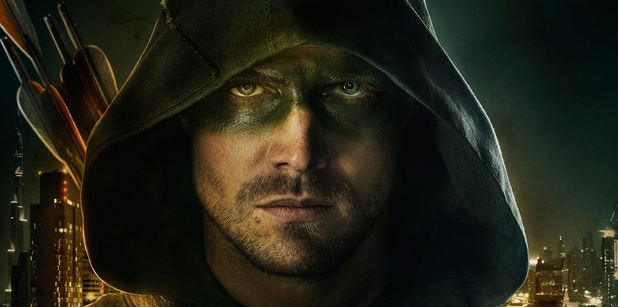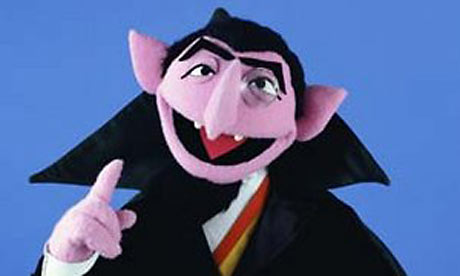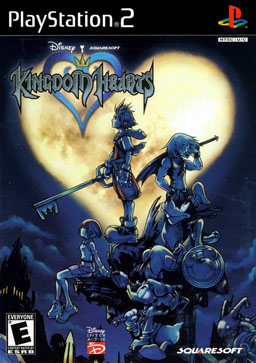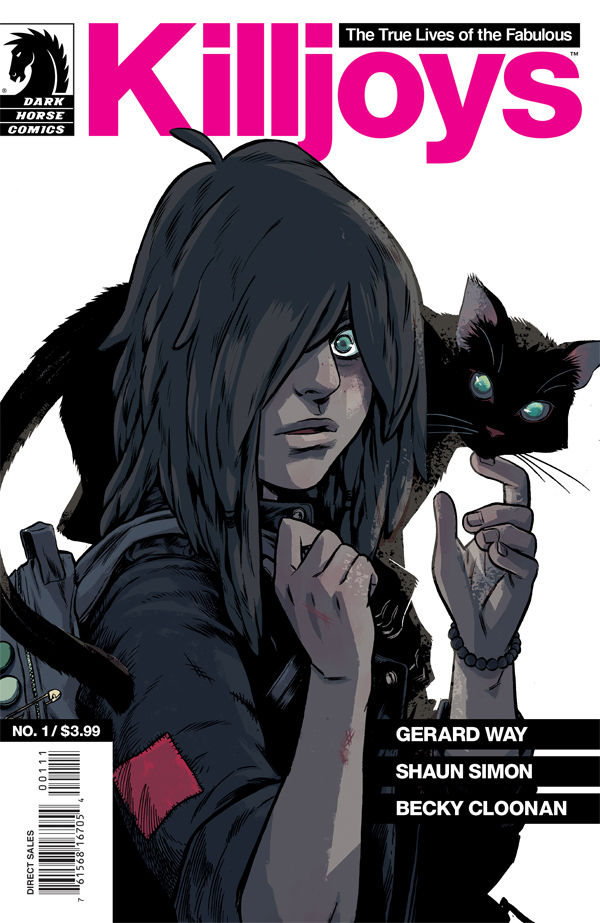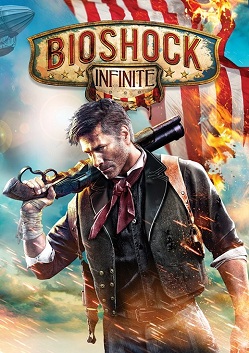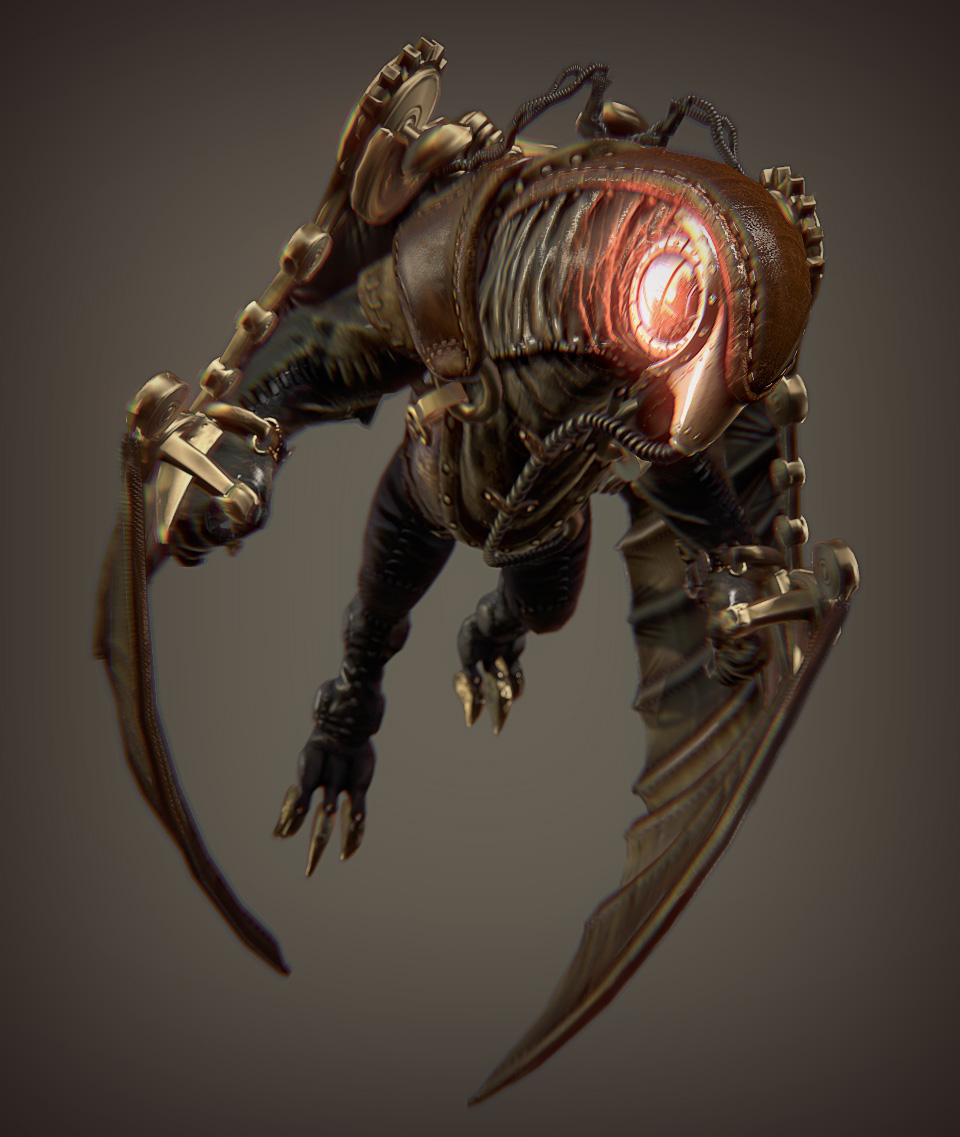My regular readers (hi mom!) might remember that just over a year ago, I wrote a review of the pilot to the CW's Arrow, an adaptation of the DC Comics superhero Green Arrow. I was critical of it (with good reason), but to be fair, no show, no matter how good or bad it is, should be judged on its first episode alone. This past week, I watched the first season of Arrow on Netflix and, to be perfectly honest, it does improve as the show moves forward. Our hero's practice of killing bad guys is called into question, his one-man crusade becomes a team effort, and there's some compelling human drama to be found in Oliver Queen's supporting cast, specifically in how his life of crime-fighting affects them.
I say all this so you understand that while it has its ups, this show, at it's very core, is DUUUUUUUUUUUUUMB.
I think the issue comes down to one of tone. The CW is trying to have it's cake and it eat it too: it wants a slick, edgy, sexy action show, but it's about a superhero, an idea which is silly and childish from the get go. Everyone on Team Arrow standing around home base and making their most super-serious face comes off as laughable when the work our main character is so super-serious about is cosplaying as Robin Hood and yelling at rich people, fighting with a stick and a string from the Paleolithic Era and acting like he's the personification of Occupy Wall Street. It just feels like the show is actively denying that it's fun. I mean, come on, crack a smile once in a while for God's sake.
Tone is the umbrella under which most of the problems fall under, but there's a bit more to it than that. So here I am, to list my grievances in the hopes that you all can laugh with me at this silly little program.
The Costume
Honestly, this one doesn't bother me as much as you might think. Yeah, it's a boring costume for a superhero, but at least it translates well to TV. Arrow goes less with an Errol Flynn Robin Hood look and more of a...well, hood. And it works; it's evocative of fantasy iconography and it does a decent job of hiding the hero's identity. Part of me has to question how much his peripheral vision is shot by having that thing on his head, but overall, it looks intimidating and iconic and it works.
Less-so is the mask part of it, or lack thereof. See, Green Arrow is traditionally shown wearing a diamond mask to hide his identity, which, in real life, wouldn't do much to that effect. The show, therefore, replaces the mask with green make-up around his eyes. The results are dumb.
Superhero costumes have sometimes irked me because in a situation a hero is needed and our main character is in his/her civilian guise, they have to duck into some secluded place, change into their costume, stash their clothes, go fight the bad guy or save the people or whatever, return to the secluded spot, change back, and go about their day. It just doesn't seem feasible that a costume change has to delay an emergency rescue all the time, y'know? So, say, in episode three of Arrow when Oliver Queen is at a party that gets assaulted by a sniper and ducks away to don his vigilante duds, part of me has to laugh at the mental image of the good guy stopping at a bathroom mirror to delicately and expertly apply his face paint before fighting the shooter. It just seems silly, doesn't it?
The Island
As previously established, Oliver Queen's backstory involves him being shipwrecked on a deserted island, where he learns to survive and become a fighter so that five years later he can return to Starling City (yeah, it's Starling City, not Star City like in the comics. Why that change?) and become a hero. Flashbacks throughout the first season detail exactly what happened on the island, with Ollie making an enemy of mercenary Eddie Fyers and allies of political prisoner Yao Fei, his daughter Shado, and other mercenary Slade Wilson. Ollie and Slade particularly team up in their efforts to stop Fyers evil plan and escape from the island.
While it's sort of interesting to see how our hero goes from wimp to badass, plus my personal adulation at seeing Yao Fei onscreen and knowing that someone besides me remembers the Chinese superhero team the Great Ten (even if Yao has almost nothing in common with his print counterpart, the aptly named Accomplished Perfect Physician), I can't help but not give a damn about the island flashbacks because, well, we know how the story ends. Every escape attempt by Ollie and Slade is rendered meaningless because the audience knows that's not how the story goes. A story can make up for that by giving the story meaning beyond "here's some stuff that happened", but it's all as lifeless as the rest the present story. It's just not engaging at all, which is unfortunate since it takes up a good chunk of the season.
Adapting Characters
I suppose this is the real meat of what makes Arrow not work. See, the show has created an environment where superhero elements and iconography are frowned upon, and therefore comic book characters steeped in that lore are distilled to their dullest, most uninteresting, and in some cases, most laughably bad forms. Who makes the worst transitions? Well, let's take a look.
Deadshot - When you look at it all lined-up, Floyd Lawton, a.k.a. Deadshot, has had an interesting career trajectory. He started out as a vigilante rival to Batman, a pistol-wielding foil to the gun-free Dark Knight. He then moved on to straight up villain for hire before what he's probably best known for, joining the Suicide Squad (think The Dirty Dozen with supervillains). What makes Deadshot interesting, besides the "never misses" marksman angle and that badass costume, is his personality; Deadshot is an unflappable professional in the field, which strangely works with his devil-may-care attitude, but he hides a sense of self-hatred and a wish to die in a spectacular fashion, which is partly informs why he does what he does. Arrow's version of the character doesn't really go into all of that, which is understandable since he's a villain-of-the-week. What's less understandable is that stuff they added to him.
Because an assassin with perfect aim and a robot eye apparently isn't enough, TV Deadshot has two stupid traits added to make him more "interesting": the first is that he laces his bullets with a deadly poison, which, if you're the world's best marksman, seems like the literal definition of overkill. The second is that Deadshot tattoos the names of his victims on his body. This irks me because Deadshot (the one from the comics, at least) doesn't put this much thought into his work. He doesn't care about the people he kills enough to "immortalize" them with body art. Taking trophies like this seems less like an assassin and more like a serial killer. I get trying to make your villain more intimidating, but this just seems unnecessary and contrived.
Roy Harper - Oh goody, someone to really hate on.
Roy Harper is one of my favorite characters in DC, if only because his character has gone through so many changes over the years. He started out as Speedy, the Robin to Green Arrow's Batman, a teen sidekick to appeal to the kids in the audience. In the early 70's, however, writing duties on Green Arrow fell to Denny O'Neil and Neal Adams, who wanted to inject more social commentary and adult themes into their books. One of the results of their efforts was "Snowbirds Don't Fly", a two-part story arc in Green Lantern/Green Arrow which saw Roy become a heroin addict. Ollie fires him from the team and afterwards, Roy kicks the habit and goes on to a career in solo-heroism. He also has an affair with the supervillain Cheshire, the result of which is a daughter, Lian Harper. Having a superhero who's also a single dad is a rare and interesting idea, which is why it's so frustrating that DC killer her off in Cry for Justice, I mean seriously, WTF you ass-clowns.
Point is, Roy's an interesting character in the comics, a sort-of everyman in an extraordinary world. In Arrow, he's just an utter douche.
TV Roy is introduced to his future love interest Thea Queen by way of purse-snatching. Thea considers pressing charges, but reconsiders when she hears Roy's most likely BS sob story and also she thinks he's cute. She decides to try and help the kid, but Roy is poor and therefore reflexively hates the upper class, which doesn't stop him from dating Thea an episode later. At one point, Thea gets him a job at her brother's night club, which he doesn't show up for because he "doesn't want anyone's charity" (because apparently, if someone gives you the opportunity to earn money rather than just give it to you, it's charity). Nothing Roy does makes sense, and here's a writing tip for you kids out there: If the audience doesn't understand a character's actions, we don't like the character.
Season 2 seems to be setting up Roy's position as Ollie's sidekick, and I sincerely hope it gets him to grow out of his immaturity and chronic douchiness, but I doubt it.
Firefly - Garfield Lynns, a.k.a. Firefly, is traditionally a Batman villain, but shows up here anyway. I don't mind because Green Arrow has so few villains of his own, he might as well borrow some from other heroes. The problem is that this is Arrow, and what was a potentially interesting character is now just a name attached to a boring villain.
Firefly isn't deep or well-developed, and you'd be forgiven for assuming he's a character reverse-engineered from a good-sounding name. "Hey, I've got an idea! Let's make a Batman villain named 'Firefly'!" "Great! What does he do?" "He flies and he shoots fire!" "Brilliant!" But at the very least, Firefly is a visually interesting villain with access to equipment that can do a lot of damage and give a superhero some trouble. None of that is present in Arrow.
TV Firefly is a former fireman, believed to have died on the job, who is now bumping off his old colleagues who failed to save him. Rather than the cool suit and jet pack, Lynns dresses in a standard fireman's uniform, goes into burning buildings, sprays the firefighters with gasoline, and then watches them burn. Also, he's got scars under his mask. That's just...boring. Really, really boring. I know he's a one-off villain, but if you're gonna have a character known for the jet-pack and flamethrower and strip him of those things, then why bother using him at all?
Huntress - This one actually stays mostly intact from her comic book counterpart, she's just badly acted and calls out one of the major flaws of the show.
Helena Bartinelli is the daughter of a mafioso who is disgusted by her father's activities and takes up a life of vigilantism to stop him. She's often someone who will use murder as a tactic, which of course prompts other heroes to remind her that killing is bad and wrong. Her adapted version keeps pretty much all of that intact - it even goes so far as to give her a costume, complete with domino mask and minature crossbow as a primary weapon. The problem with Huntress isn't really Huntress herself, it's that Oliver Queen comes off as a complete hypocrite when trying to explain to her that she shouldn't kill bad guys, even though that's his bread and butter. I'm guessing Huntress was included to show someone who's worse than our questionable hero, much like the service Todd Packer provided Michael Scott in The Office, but here it doesn't make our hero look better, it makes him look worse. Also Huntress is badly acted and a straight-up villain rather than an anti-hero, but whatever.
The Count - The Count may be my favorite villain on the show, if only because everything about him is wrong in such a way that it turns the whole character into a complete failure of ideas. He is terrible and I love him for it.
The Count is a loose, LOOSE interpretation of classic Green Arrow baddie Count Vertigo, the monarch of an Eastern-European nation whose motivation ranges from trying to Game-of-Thrones his way to power, to world domination, to helping the U.S. government for kicks. I'm not going to say he's the most well-developed villain in comics, but he does have one thing going for him: his powers. Count Vertigo has the ability to induce vertigo in others, which means the good guys fighting him can't maintain their balance or sense of direction and must therefore find a way to beat him that isn't "punch him in the face". With that, you could make an interesting bad guy that isn't easily overcome, forcing our heroes to think outside the box to stop him. Arrow does nothing with any of that, and the results are hilariously bad. So just what's wrong with the Count? Shall I count the ways?
1) The name. It sounds dumb, and since his real name is never given, it's all anyone ever calls him.
2) The character. The Count of Arrow is a crazy, off-balance (heh) drug manufacturer whose signature product is called Vertigo. The character himself acts like a bargain-basement Joker, a grinning, unpredictable criminal who's just as likely to compliment you as he is to kill you. At least, that's what I think he's supposed to be, but the half-assed writing and bad acting just make him seem like a weirdo that people are inexplicably afraid of. I'm sure Seth Gabel is trying to make this guy interesting, but he just really isn't, at least not for the reasons the writers want him to be.
3) The name. He's called the Count because early test subjects for his drugs were found with two syringe marks in their necks, giving the image that they were bitten by a vampire. Yes, they expect us to take this seriously.
4) The costume. The Count's eccentricity may be better highlighted if he dressed the part. Instead, he's in a long coat and wearing all black, which makes him look less like a threat and more like a contemporary for Gary King from The World's End. The outfit makes him seem like a thirty-year-old goth who happened to have eaten too many pixie-sticks that day. Not intimidating, just weird.
5) THE NAME. I'm sorry, I can't get over this. When I think of a title like "the Count", I don't think of a drug dealer who looks like David Tennant's lame cousin, I think of this guy:
When Oliver goes to meet him, I half expected the guy to say, "I will sell you...three drugs! One, two, three! Three drugs! Ah ah ah ah ah!" I actually wish he did, that'd be hilarious.
So that's my venting for the series Arrow. It's dumb and misguided, but that's not gonna stop me from watching it. Hell, season two opens with Oliver deciding that killing is bad and wrong and aspiring to do good in his city instead of just hunting down the evil 1%, so it seems like our superhero show may actually star a superhero. Plus, the Flash is going to be introduced this season, which should at least be an interesting change of pace since he's going to be an actual super-powered character, something this show hasn't tackled yet. So if you want a below-average action show to pass the time with, you can do worse than Arrow.
Thanks for reading and I'll see you next time!

